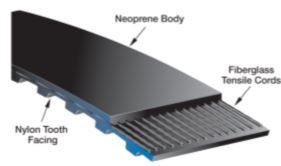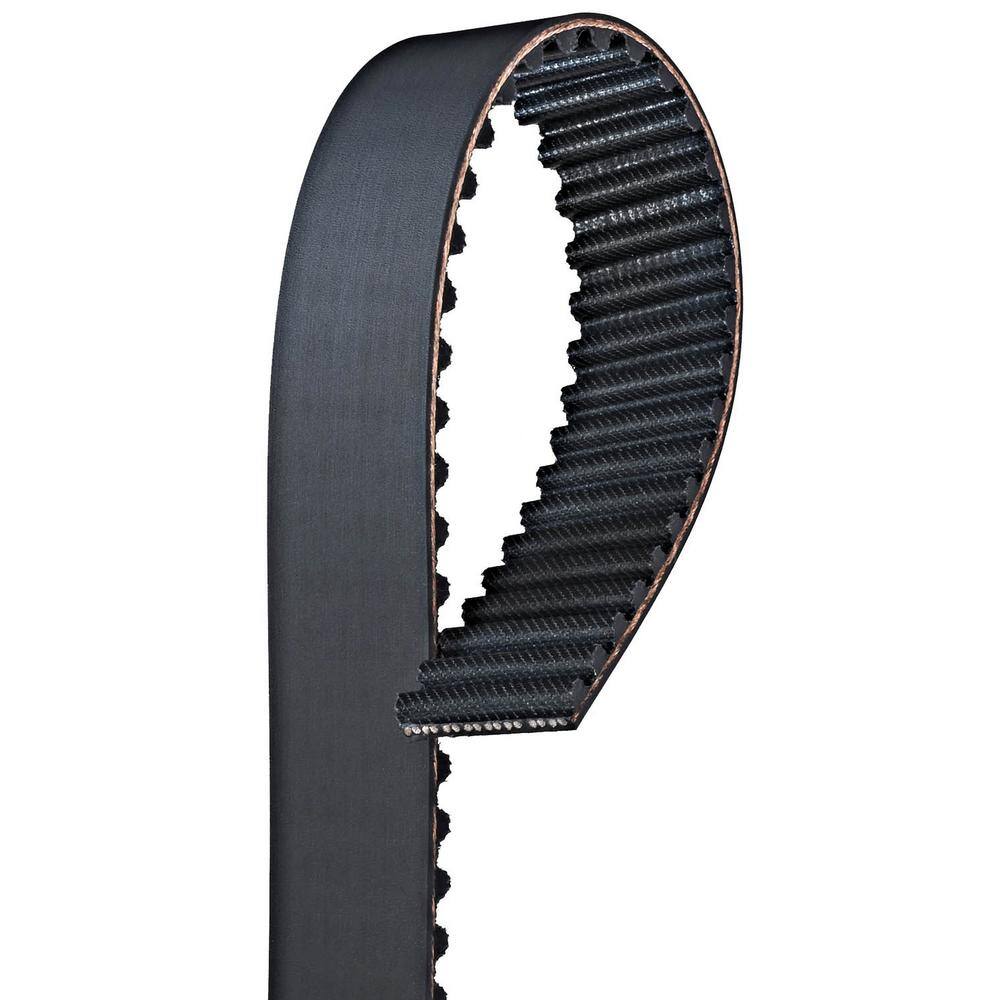
( If you don't understand tension ratio, check it out here.) Throughout the EPI website, the calculations for loads imposed by the Pol圜hain toothbelt drive have been updated to reflect this new information. One of the important changes is the fact that the maximum recommended tension ratio is being increased from 8:1 to 10:1 (That means the minimum allowable preload is LESS than before.
#Gates synchronous belt engineering calculator manual#
In July of 2004, he told us that Gates is in the process of updating their manual to reflect some of the new engineering data they have gathered from field experience with the Pol圜hain toothbelt. Our contact in Gates engineering is one of the people responsible for the engineering manual. (BTW, Gates engineering has told us unequivocally that one ProDrive belt sample we sent them was indeed a Gates product, and they wanted to know why the Gates logo had been removed.) 3. We really don't understand why ProDrive would send that belt to Gates for analysis, since they insist is not a Gates product. Recently ProDrive claimed they were sending Ardie Greenameyer's broken belt (the one being fixed at Homer's in July, 2004) to Gates for analysis. REMEMBER, Gates doesn't want their stuff on aircraft.) (It has been edited to remove names and phone numbers. They said there was clear evidence of the belt having skipped teeth, which severely overstresses the belt cords AND the shafts AND the bearings.Ī copy of that report from Gates is shown in Figure 2 below. Their opinion (a consensus of several knowledgeable Gates engineers) is that the belt almost certainly fractured because of being operated in an undertensioned drive system. Ardie Greenameyer's broken belt looked very similar to this one.ĮPI sent Mike Morgan's broken belt to Gates Engineering for analysis. Recently, there have been two cases of the ProDrive belt fracturing across a single tooth root, as shown in this picture (Figure 1) of Mike Morgan's belt, which broke after slightly more than 3 hours of operation. of torque through this drive dynamically (like at 2168 RPM, for example), with no preload on the system, you would certainly have tooth-skipping and horrible overloads to the shafts and bearings (not to mention to the belt).Īnd, of course, there was no mechanism in their demo to show the dramatic increase in SHAFT load caused by an under-tensioned belt. The misleading part of this snake-oil demo is that if you were to try and transmit 230 lb.-ft. There was clearly no residual tension in the slack side of the belt, AND LOOK !, ProDrive proclaimed, "the belt does not skip teeth". So when you applied 230 or so lb-ft of torque, the loose side of the belt sagged, mostly due to the movement of the large sprocket, which was loosely-bolted to the trailer. Of course, there was no preload on the belt. That display consisted of two ProDrive sprockets (34 and 144 tooth) loosely attached to the side of a trailer, with a lever for applying torque to the driving sprocket.

Perhaps it is based on some fallacious observation taken from the misleading static display they had at Homer's-2004. Anyone who has actually examined the system in operation system would realize that 1/4" of stretch is just not reasonable. It is a puzzlement how ProDrive comes up with a belt stretch value which is four times the REAL value. That stretch value (0.066") agrees exactly with the value which Gates Engineering calculates for the ProDrive system with 95 HP applied at 2168 RPM. That stretch is 0.066 inches (just a hair over 1/16 of an inch). Using the Gates methodology and that modulus, we calculated the stretch produced by (a) 1619 pounds of tension applied to (b) a 62mm Pol圜hain GT-2 belt over a tensile span of (c) 19.75 inches. Gates Engineering has provided EPI with the belt modulus which they use to calculate the stretch of a Pol圜hain belt in response to a given load.


(BTW, for the same power, the driving tension in Al Behuncik's system is 1281 pounds.) We all seem to have agreed that, in order to transmit 95 HP (230 lb-ft of torque at 2168 RPM) to the main rotor, the driving tension load (that is, differential tension, not including preload) in the ProDrive belt is about 1620 pounds. ProDrive's website claims that the Gates belt stretches 1/4" under the drive load on the secondary shaft. I think it is important to debunk the myths and rumors and put some numbers to the claims. There are rumors, claims, counterclaims and just plain false information floating around regarding the use of the Gates Polychain™ Toothbelt as a main rotor drive. Upset anyone's precious FEELINGS or delicate SENSIBILITIES Gates Toothbelt Drive Issues - Myths, Rumors, Claims, Counterclaims, and Nonsense NOTE: All our Products, Designs, and Services are SUSTAINABLE, ORGANIC, GLUTEN-FREE, CONTAIN NO GMO's, and will not


 0 kommentar(er)
0 kommentar(er)
